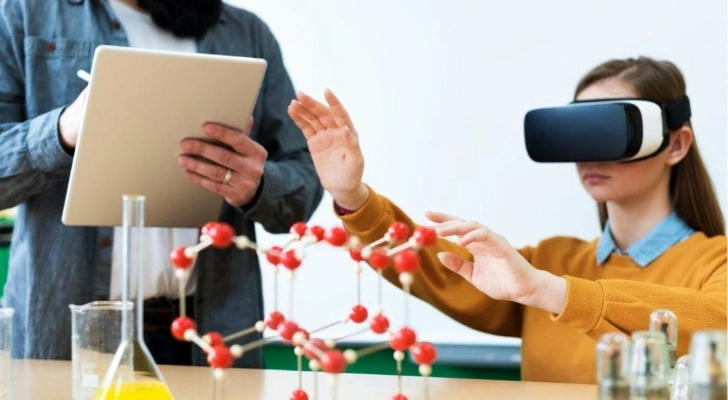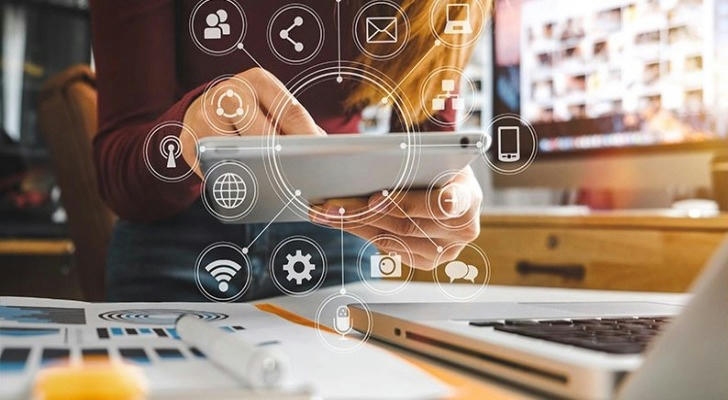How do VR and AR change classroom instruction and lab practice?
With the rapid development of science and technology, VR and AR technologies are gradually entering the field of education, changing traditional classroom teaching and laboratory practice. VR and AR technologies provide learners with an immersive experience, which not only improves the interactivity of learning, but also expands the boundaries of education.

Emma Thompson is a high school biology teacher who decided to integrate VR and AR technologies into her classroom teaching. By using the virtual laboratory of the Labster platform, Emma's students are able to conduct biological experiments such as gene splicing and cell observation in a virtual environment without actually operating complex experimental equipment. Students wear VR headsets to experience the experimental process immersively, which enables them to better understand theoretical knowledge and interact. In addition, Emma also uses AR applications to project three-dimensional biological models onto the desktop in the classroom, allowing students to observe cell structure and organ function from different angles. Through these technologies, Emma's teaching has become more vivid and interactive, and students' interest and understanding of biology have been significantly improved. It can be seen that VR and AR technologies can bring unprecedented innovation and change to education.
What is Virtual Reality (VR) Technology?

Immersive learning experience: The virtual environment created by VR allows students to experience the learning content in an immersive way. For example, in history classes, students can visit scenes of ancient civilizations through VR and gain an in-depth understanding of historical events and cultural backgrounds. This immersive experience helps students better understand and remember the learning content.
Virtual laboratory: VR technology enables students to conduct scientific experiments in virtual laboratories without actually operating dangerous chemicals or expensive experimental equipment. This method not only improves the safety of experiments, but also allows students to practice experimental operations many times, improve skills and confidence.
Simulation and training: VR can also be used for skill training, such as virtual surgery simulation in medical training. This simulation allows students to practice in a safe virtual environment, master operating skills, and improve their abilities in practical applications.
What is augmented reality (AR) technology?

Real-time information overlay: AR technology can overlay virtual information on the real world to enhance students' understanding of the actual environment. For example, AR applications can overlay three-dimensional models on textbook pages, allowing students to intuitively observe complex biological structures or geographical features.
Interactive teaching materials: AR can transform static teaching materials into interactive learning resources. Students can see dynamic content display by scanning books or teaching materials through AR devices. This interactivity helps students better understand and absorb knowledge.
Experimental guidance: In the laboratory, AR technology can provide experimental steps and data analysis in real time to help students track experimental progress and reduce errors. For example, AR can display the correct proportion and reaction conditions of mixed chemicals to help students complete experiments more accurately.
Application of VR and AR in teaching and laboratory practice

Improve participation: VR and AR technologies can increase students' participation and interest, making classroom teaching more vivid and interactive. Students can participate in the learning process more actively through virtual experience, improve learning motivation and effect.
Personalized learning: These technologies support personalized learning, allowing students to learn at their own pace. For students with special needs, the customized learning experience provided by VR and AR is particularly important.
Reduce costs and risks: Virtual laboratories and AR experimental guidance reduce the cost of experimental materials and equipment, reduce safety risks in experiments, and make educational resources more accessible.
Challenges in implementation
Cost issues: The high cost of VR and AR equipment and the requirements of technical infrastructure are a major challenge for schools. Funds need to be invested to purchase equipment, maintain it, and upgrade it.
Teacher training: Teachers need to master the skills to use VR and AR technologies and understand how to effectively integrate them into teaching. Professional training and technical support are essential for teachers to successfully implement them.
Content development: Creating VR and AR content suitable for education requires time and resources. Educational institutions and content developers need to collaborate to develop and share resources to improve the quality and applicability of content.
In general, VR and AR technologies are revolutionizing the field of education. By providing immersive learning experiences and interactive guidance, these technologies have brought significant improvements and enhancements to teaching and laboratory practices. With the continuous development and application promotion of technology, future education will be more modern and innovative.
